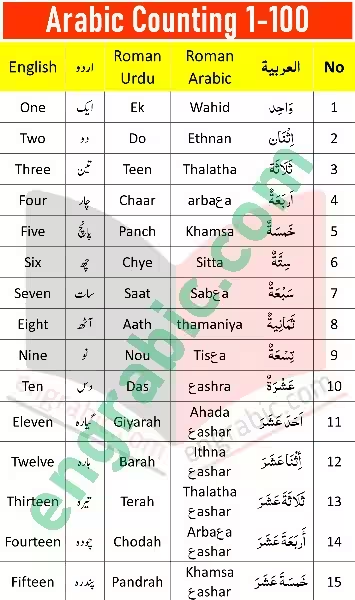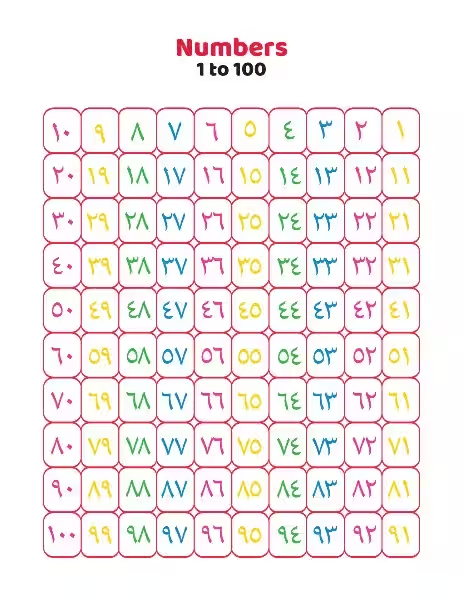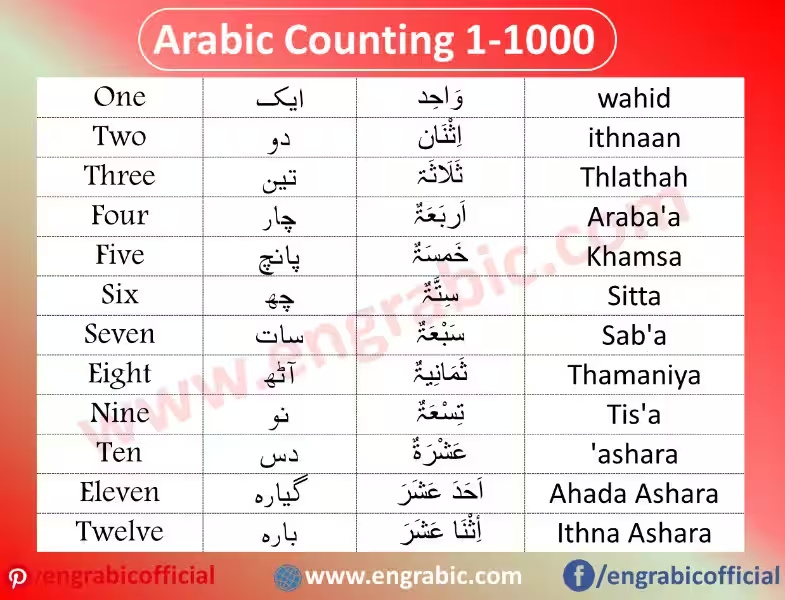
Embark on a journey into the fascinating world of Arabic numerals, where numbers hold a unique charm and a rich cultural history. This exploration will focus on mastering the Arabic numerals from 11 to 20, a crucial step in expanding your linguistic repertoire and deepening your understanding of this beautiful language.
Arabic Numbers: A Glimpse into the System
Arabic numerals, unlike their Western counterparts, have a distinct structure that is intriguing and rewarding to learn. Instead of simply combining units and tens, each number from 11 to 20 has its own unique name and formation. This is a testament to the rich history and linguistic nuances of the Arabic language.
Imagine the number 11, for instance. In Arabic, it is written as “أحد عشر” (pronounced “ahad ‘ashar”), a combination of the words “one” (أحد) and “ten” (عشر). The same principle applies to the remaining numbers in this range, each with its own distinct name and formation.
Mastering the Numbers 11 to 20: A Step-by-Step Guide
Let’s delve into the intricacies of these Arabic numerals, breaking down each number into its constituent parts and exploring their unique pronunciation.
11: أحد عشر (ahad ‘ashar)
The number 11, as mentioned earlier, is formed by combining “one” (أحد) and “ten” (عشر). This construction lays the foundation for understanding the structure of the remaining numbers in this range.
12: اثنا عشر (ithna ‘ashar)
The number 12 is composed of “two” (اثنا) and “ten” (عشر). Notice how the word “ten” remains constant, while the numeral for “two” is used instead of “one.” This pattern continues for the subsequent numbers.
13: ثلاثة عشر (thalatha ‘ashar)
For the number 13, we use “three” (ثلاثة) and “ten” (عشر). Observe how the Arabic language uses specific words for “one,” “two,” and “three” when combined with “ten.”
14: أربعة عشر (arba’a ‘ashar)
The number 14 is made up of “four” (أربعة) and “ten” (عشر), following the established pattern.
15: خمسة عشر (khamsa ‘ashar)
The number 15 combines “five” (خمسة) and “ten” (عشر), further solidifying the consistency of the Arabic numeral system.
16: ستة عشر (sita ‘ashar)
The number 16 uses “six” (ستة) and “ten” (عشر).
17: سبعة عشر (sab’a ‘ashar)
The number 17 is formed from “seven” (سبعة) and “ten” (عشر).
18: ثمانية عشر (thamaniya ‘ashar)
The number 18 is composed of “eight” (ثمانية) and “ten” (عشر).
19: تسعة عشر (tis’a ‘ashar)
The number 19 uses “nine” (تسعة) and “ten” (عشر).
20: عشرون (ishroon)
The number 20 has a unique name, “عشرون” (pronounced “ishroon”), which does not follow the pattern of the previous numbers. It is important to remember this unique name for 20.
Beyond the Numbers: Unlocking a World of Possibilities
Learning Arabic numerals from 11 to 20 is not just about memorizing words and formations. It is about opening a door to a rich cultural heritage and a world of communication. These numbers are the building blocks for expressing quantities, dates, times, and countless other aspects of daily life.
As you master these numbers, you will gain confidence in your Arabic language skills, becoming more fluent in everyday conversations and interactions. Your journey into the Arabic language has just begun, and the possibilities are endless. So, continue to explore, embrace the beauty of this language, and connect with a vibrant culture through the power of numbers.
Frequently Asked Questions About “11” in Arabic
What is the Arabic word for “11”?
The Arabic word for “11” is “أحد عشر” (pronounced “ahad ‘ashar”).
- The website you are trying to access is having issues with its SSL certificate.
- This means the website’s security is compromised, and it might be unsafe to visit.
- The website administrators need to fix the SSL certificate issue to ensure it’s valid for the correct domain name.
- Try accessing the website later, as the issue may be resolved by then.
- You can try contacting the website administrators about the issue.
- Be cautious about accessing websites with SSL certificate errors, as it can pose a security risk.








